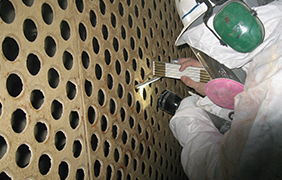Update: Industrial Boiler MACT
EPA Activity
On January 21, 2011, EPA Administrator Lisa Jackson signed final versions of the Industrial Boiler MACT rules and submitted them for publication in the Federal Register. The compliance click will start ticking 60 days after the rules are published, so affected plants will have roughly until spring 2014 to make modifications needed for meeting new emission limits.
In related news, a first draft of Utility MACT is expected out later this month, and likely will be similar in scope and details to Industrial Boiler MACT.
Neundorfer & Alliance Activity
Neundorfer has, in collaboration with alliance partners Storm (combustion optimization) and United Dynamics Corporation (boiler/heat transfer optimization), been working with customers for many months on MACT compliance strategies. Using our holistic, whole-systems approach, we’ve learned that many plants are closer than they first thought to complying with MACT emission limits for most pollutants.
In this article we share some of the insights we’ve uncovered so far about cost-effective strategies for MACT compliance.
What We’ve Learned
The most important thing we’ve learned is that, before considering any specific compliance solutions, it’s vital to get a full picture of how well your plant is currently controlling emissions of hazardous air pollutants (HAPs) regulated by MACT.
“Before making any decisions, do some preliminary testing to find out where you are,” recommends Marlin Anderson, Senior Environmental Consultant at Neundorfer. “Get the facts rather than making assumptions.”
Getting the facts means collecting enough data about operating parameters to accurately model the effects of proposed changes. During the MACT Scenario Planning Workshop in November, 2010, we collaborated with customers to develop a comprehensive list of baseline operating data that, if collected simultaneously and using industry best practices, helps pinpoint which areas of improvement will be most helpful.
For Major Sources, Industrial MACT regulates mercury (Hg), particulate matter (PM), carbon monoxide (CO), hydrochloric acid (HCl) and dioxins and furans (D&Fs). For Area Sources, the new MACT rule does not specify standards for HCl and D&Fs.
Inefficient or incomplete combustion is directly or indirectly tied to most of these pollutants. Unsurprisingly, then, optimizing combustion often turns out to be the first step in meeting emission limits, especially for stoker-fired boilers, which are used at many industrial plants. Combustion improvements”such as properly balancing under-grate and over-grate air”can make a significant difference.
Baseline testing pinpoints inefficiencies in the boiler and other locations, painting an accurate picture of where things stand now. Once you know that, it is possible to examine the potential benefits of different options and look at the probability that each option will get you where you need to be.
We have had great success helping customers develop plans for baseline testing, and what to do after that testing is complete, by facilitating co-planning meetings that get all stakeholders in the room together to flush out new information, highlight assumptions, and create consensus.
Meetings conducted in this way”facilitated by Neundorfer, and involving experts from Storm and United Dynamics Corporation, along with customer decision-makers and other consultants”have helped our customers discover the most proactive, cost-effective strategies for long-term sustainability while taking budget, timing, and market and equipment constraints into account.
What’s Next?
Now that the final Industrial Boiler MACT rules are out, it is possible to move forward much more confidently with improvement efforts. Although the EPA said it is considering some revisions to the rule, most of these potential changes focus only on industrial solid waste incinerators.
Helpful Resources
KnowledgeBase: ESP Introduction
KnowledgeBase: Baghouse Introduction
Our Capabilities: Emissions Compliance Planning & Management
Our Capabilities: Performance-Based Maintenance


